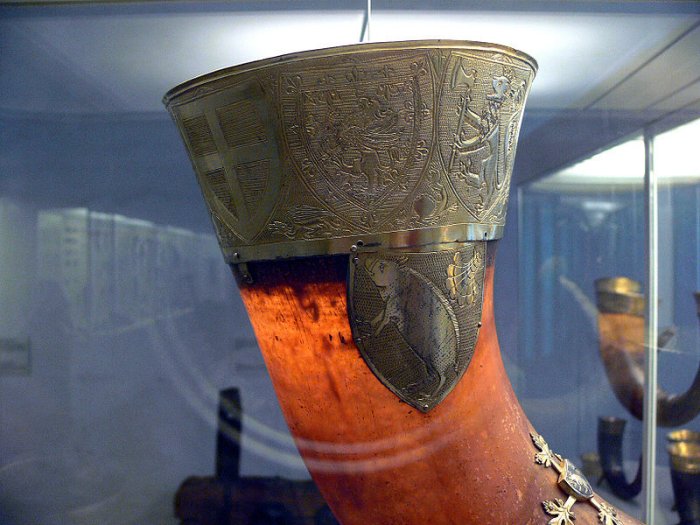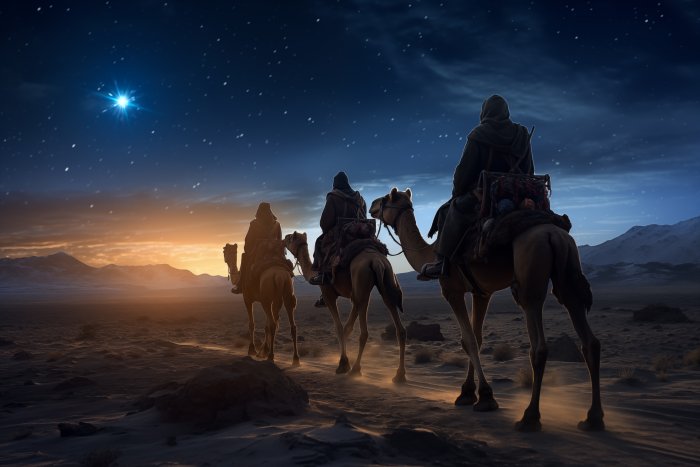Drinking Horn: Important Yule Symbol And Its Connection To Biblical Magi And Christmas
Ellen Lloyd - AncientPages.com - What do the Norse Gods Odin and Thor have in common with the Biblical Magi, the Three Holy Kings? Drinking horns reveal a link between the Yule festival and what we know as Christmas.
Left: Medieval drinking horn, mounted in copper gilt. Image credit: British Museum
Long before the arrival of Christianity, people in Scandinavia celebrated Yule, the winter solstice. This Pagan festival took place on the winter solstice day, around December 21, in the northern hemisphere and lasted 12 days. It was a time when family and loved ones got together and celebrated the rebirth of the Sun.
People loved beer, and the drinking horn became a significant Yule symbol.
The origin of the Christmas holidays can be traced to many ancient Sun cults. These include the celebration of the winter solstice and the return of the Sun.
Several unearthed Bronze Age artifacts reveal the importance of the Sun and beer! Christianity adapted many old customs.
Drinking horns were famous among many different ancient cultures. They were used by Scandinavians, Greeks, Romans, Thracians, Scythians, and people in Africa. People have been drinking from horns for at least 2,600 years.
Vikings produced drinking horns and drank to the memory of their Norse gods, Odin and Thor. In the Prose Edda, a passage describes how Thor drank from a horn that, unbeknown to him, contained all the seas.
Historians haven't been able to find evidence that can be directly linked to Christmas celebrations in pre-Christian times. Still, many artifacts and archaeological discoveries may indirectly be connected to the old Christmas traditions, like drinking beer, bread baking, and festivities in the darkest time.
Early modern drinking horn displayed at the National Museum of Denmark. Credit: Christian Bickel CC BY-SA 2.0 DE
Many Pagan traditions later became part of what we recognize as Christmas traditions. In the Sagas, many stories tell how family members gathered around the table. Delicious food and beer were served.
Several drinking horns have been unearthed in Viking Age burial mounds. Many of these artifacts were found in female graves, perhaps because women were responsible for brewing mead and serving guests.
Odin, Thor And The Three Holy Kings
Several drinking horns were rich in decorations and had runic inscriptions. Runes, Odin's secret language, played an essential part in the lives of the Vikings.
Three Wise Men following the Bethlehem star in the night. Credit: Adobe Stock - Dmitry Rukhlenko
Drinking horns from the late Middle Ages are usually well preserved because they were inherited instead of buried in the soil. Around the mouth is usually a wide brass fitting on these drinking horns, often inscribed in Latin letters with the names of the Three Holy Kings: Caspar, Melchior, and Balthasar.
The drinking tradition changed over time. People continued to drink beer, but instead of honoring Odin and Thor, they celebrated the arrival of the magi, three Holy Kings who came to baby Jesus.
Beliefs changed, but many traditions remained the same.
Written by Ellen Lloyd – AncientPages.com
Updated on December 23, 2023
Copyright © AncientPages.com All rights reserved. This material may not be published, broadcast, rewritten or redistributed in whole or part without the express written permission of AncientPages.com
Expand for referencesMore From Ancient Pages
-
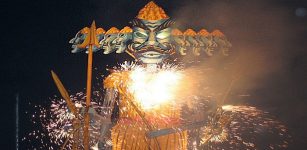 Ravana: Ten-Headed And Multi-Armed Demon King Of Lanka And Chief Antagonist In Epic Ramayana
Featured Stories | Oct 8, 2019
Ravana: Ten-Headed And Multi-Armed Demon King Of Lanka And Chief Antagonist In Epic Ramayana
Featured Stories | Oct 8, 2019 -
 Link Between Changes In Evolution And Climate Discovered
Archaeology | Oct 4, 2022
Link Between Changes In Evolution And Climate Discovered
Archaeology | Oct 4, 2022 -
 Giants Did Exist And Were A Part Of Earth’s Ancient History
Ancient and Unexplained Mysteries Library - Premium Content Preview | Apr 29, 2014
Giants Did Exist And Were A Part Of Earth’s Ancient History
Ancient and Unexplained Mysteries Library - Premium Content Preview | Apr 29, 2014 -
 Obsidian Blades Reveals Dynamic Neolithic Social Networks – New Analysis
Archaeology | Oct 18, 2022
Obsidian Blades Reveals Dynamic Neolithic Social Networks – New Analysis
Archaeology | Oct 18, 2022 -
 DNA Reveals How The Vikings Changed Scandinavian Migration And Ancestry
Archaeology | Jan 5, 2023
DNA Reveals How The Vikings Changed Scandinavian Migration And Ancestry
Archaeology | Jan 5, 2023 -
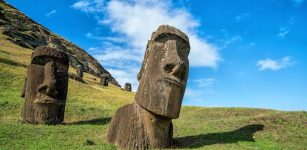 New Moai Statue Found On Easter Island
Archaeology | Feb 28, 2023
New Moai Statue Found On Easter Island
Archaeology | Feb 28, 2023 -
 4,500-Year-Old Sumerian Palace Discovered In The Ancient City Of Girsu
Archaeology | Feb 20, 2023
4,500-Year-Old Sumerian Palace Discovered In The Ancient City Of Girsu
Archaeology | Feb 20, 2023 -
 Bronze Age DNA Shows Direct Genetic Link To Current Inhabitants Of Southern Poland
Archaeology | May 4, 2020
Bronze Age DNA Shows Direct Genetic Link To Current Inhabitants Of Southern Poland
Archaeology | May 4, 2020 -
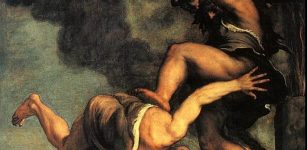 Supernatural Beliefs Have Featured In Every Society Throughout History: New Research Helps Explain Why
Featured Stories | Apr 5, 2023
Supernatural Beliefs Have Featured In Every Society Throughout History: New Research Helps Explain Why
Featured Stories | Apr 5, 2023 -
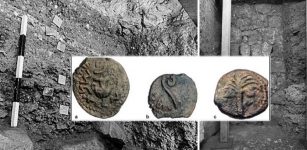 New Discovery: 2,000-Year-Old Monumental Street In Jerusalem Built By Pontius Pilate
Archaeology | Oct 21, 2019
New Discovery: 2,000-Year-Old Monumental Street In Jerusalem Built By Pontius Pilate
Archaeology | Oct 21, 2019 -
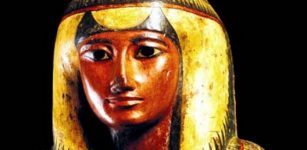 Sha-Amun-en-su – Tragic Fate Of Ancient Egyptian Priestly Singer’s Unopened Sarcophagus
Featured Stories | Jun 25, 2021
Sha-Amun-en-su – Tragic Fate Of Ancient Egyptian Priestly Singer’s Unopened Sarcophagus
Featured Stories | Jun 25, 2021 -
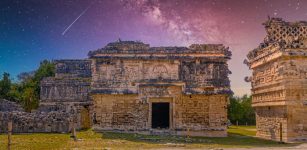 Unpredictable Rainfall May Have Caused Disintegration Of Early Maya Societies
Archaeology | Apr 7, 2023
Unpredictable Rainfall May Have Caused Disintegration Of Early Maya Societies
Archaeology | Apr 7, 2023 -
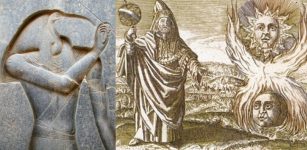 Hermes Trismegistus Brought Divine Wisdom To Mankind – Secret Knowledge Of Hermetica
Featured Stories | Jan 17, 2019
Hermes Trismegistus Brought Divine Wisdom To Mankind – Secret Knowledge Of Hermetica
Featured Stories | Jan 17, 2019 -
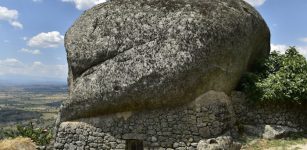 Ancient Village Of Monsanto, Miraculously Balanced Giant Boulders And Knights Templar Connection
Civilizations | Dec 20, 2018
Ancient Village Of Monsanto, Miraculously Balanced Giant Boulders And Knights Templar Connection
Civilizations | Dec 20, 2018 -
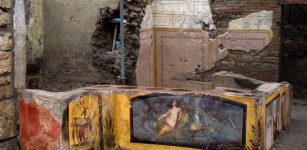 Remarkably Well-Preserved Thermopolium With Frescoes, Food, And Jars Discovered In Pompeii
Archaeology | Dec 28, 2020
Remarkably Well-Preserved Thermopolium With Frescoes, Food, And Jars Discovered In Pompeii
Archaeology | Dec 28, 2020 -
 Treasures From Ancient City Of Hippos-Sussita Displayed In Exhibition For The First Time
Archaeology | Jan 3, 2018
Treasures From Ancient City Of Hippos-Sussita Displayed In Exhibition For The First Time
Archaeology | Jan 3, 2018 -
 Why Did Sages And Shamans Repeatedly Visit The Mysterious Finnish Pirunkirkko Cave (Devil’s Church)?
Archaeology | Nov 27, 2023
Why Did Sages And Shamans Repeatedly Visit The Mysterious Finnish Pirunkirkko Cave (Devil’s Church)?
Archaeology | Nov 27, 2023 -
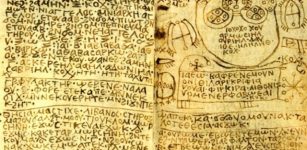 Ancient Mystery Of Baktiotha And The Egyptian Spell Book
Artifacts | Sep 4, 2015
Ancient Mystery Of Baktiotha And The Egyptian Spell Book
Artifacts | Sep 4, 2015 -
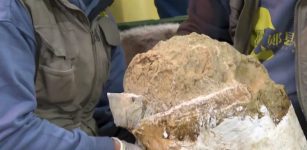 Fossilized Million-Year-Old Human Skull Of Yunxian Man Excavated In China
Archaeology | Jan 10, 2023
Fossilized Million-Year-Old Human Skull Of Yunxian Man Excavated In China
Archaeology | Jan 10, 2023 -
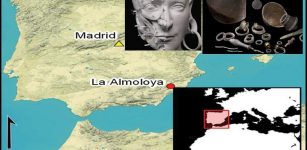 Disappearance Of The El Argar Civilization – Why Has No One Lived In The La Almoloya Region Again?
Civilizations | May 10, 2022
Disappearance Of The El Argar Civilization – Why Has No One Lived In The La Almoloya Region Again?
Civilizations | May 10, 2022


